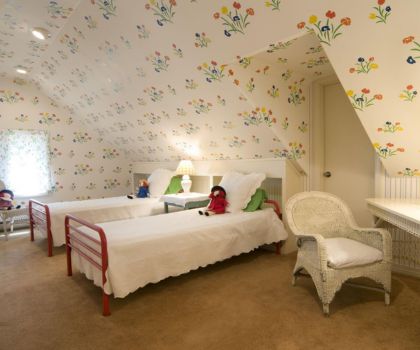
As a child grows and develops, their bed also needs to change with them. A small toddler bed size may now be too small for them, and you may start considering when it’s the right time to move her to a big, proper bed. At the end of the day, we can’t keep our kids small forever. But you wonder, How do you know when it’s time to make the switch?
When is the right time to move from toddler bed to single bed?
Moving your little one to a single bed isn’t necessarily about the age. There are various reasons for a move to happen, it could be physical, child’s mental growth, the growth of a younger sibling, or simply that she’s been asking to move to a bigger bed. Here are some factors that you may consider.
Age
A common guideline is to transition to a single bed when a child reaches 3 to 4 years old and has outgrown their toddler bed. This is the average age when children are ready to make the switch, but some children may be ready earlier, while others may need to wait until they are 5 years old.
Physical sign
Physical growth is the most visible sign that your child is ready for her big move. It could be that she’s now too tall that she doesn’t fit the size of a toddler bed anymore, like her feet are touching the ground or she’s trying to put her head on one corner and feet on another end to try to make some space when she’s sleeping. Or, if your child has gained some weight and the bed is starting to feel unstable or creaky, it’s time to switch to a more sturdy bed.
Safety
Safety is a key factor when deciding when to move from a toddler bed to a single bed. Toddlers should not feel cramped in their bed, and there should be enough space for them to move around comfortably. As your child grows, she’ll also become more active, and a small toddler bed may not be able to handle their movements for longer. If that’s the case, it’s time to start thinking about getting a new bed.
Independence
Mental growth is as important as physical growth. First, if your child has established a good sleeping habit, and is able to fall asleep and stay asleep on their own, they may be ready to make the transition to a single bed. Another sign of sleep independence is that she is no longer scared of the dark or sleeping alone, or she’s now able to calm herself. The most important of all is when your child has shown a sign of increased confidence and maturity, such as being able to understand and follow rules, they may be ready to make the switch to a single bed.
Talk and listen to your child
The easiest way to know when it’s time for the move is to listen to your toddler. When she’s starting to feel uncomfortable, or she may feel that she wants a bed that looks like an adult bed, she usually will start asking you for a new bed.
You may also ask her if she feels comfortable in her current bed, because by listening to your child’s needs and wants, you can ensure that the transition to a single bed is a positive and enjoyable experience for everyone.
Re-check your toddler bed’s limit
An essential thing you need to check is your toddler’s bed limit. Some beds are designed to grow with your child until their school years, while some toddler beds are just until the age of 4 or five, or until she’s 25kg.
Therefore, find and re-check what your bed’s manufacturer stated about the bed’s maximum weight, height or age limit. Your child may still feel comfortable on her current bed, but exceeding the bed’s limit can be dangerous for her in the long run.

How to transition your toddler to a single bed?
Talk to your toddler about the change
Before making the switch, talk to your child about the transition and explain why it’s happening. This will help them feel more comfortable and excited about the change, as well as not being shocked about a sudden move.
Let your child pick their new bed
The key for a smooth transition to a single bed is to make your toddler feel excited about the move. So, let her go shopping with you. Let her pick a bed style that she likes. And a mattress type that she feels good with. Involving your child in this type of decision-making can lead to an improvement in maturity and develops problem-solving skills early in her life.
Maintain bedtime routines
After the move happens, keep in mind to stick to the previous bedtime routine, such as reading a story or singing a lullaby, so that your child’s sleep routine remains healthy. On another hand, that’s also helpful to make your child feel comfortable and secure in her new bed.

